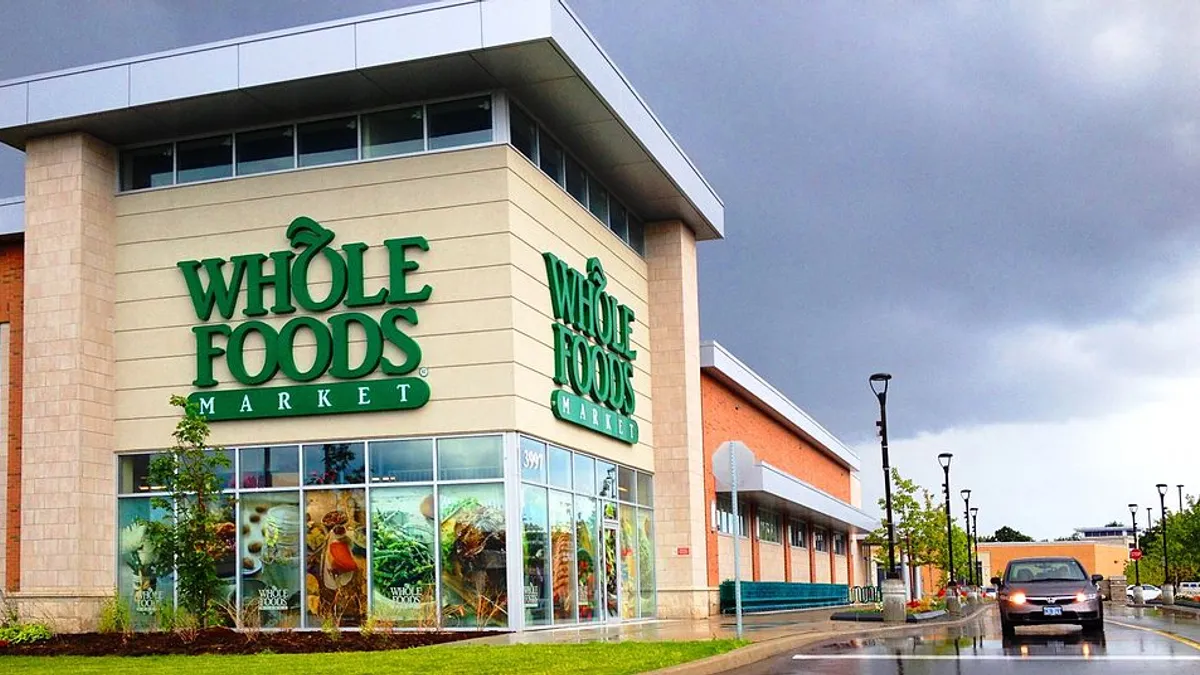Dive Brief:
- Whole Foods is launching its first round of advertisements since it was bought by Amazon last summer, and is targeting younger, quirkier consumers, according to an Ad Age article.
- The new marketing started Feb. 5th and will run through 2018. It includes 15-30 second spots for national TV, radio, digital and out-of-home. Five commercials are slated to air this month.
- The TV ads focus on shoppers' humorous in-store experiences and interactions with helpful staff members. Rather than focusing on the quality of the products, which Whole Foods traditionally does in marketing, these spots highlight a more human element and acknowledge shoppers' individuality.
Dive Insight:
Whole Foods new ads are meant to make consumers chuckle, and relate to the shoppers depicted in the spots. There's a Dad with a full cart calling home to ask what he was shopping for (diapers), a vegan-turned-paleo at the meat counter ordering steaks like its going out of style, and a chatty woman explaining why she needs to try more than one sample from a food display.
While not every shopper can see themselves in each ad, they may feel they 'know' the people depicted. It's a big departure from Whole Foods' previous marketing efforts, which emphasized the quality of products and the people who grow or make them.
If the goal is to chip away at its 'whole paycheck' image, these ads are a step in that direction.
Whole Foods is targeting a younger, perhaps Millennial, demographic. As these consumers age and have more income to spend, it is smart to appeal to them and show how they fit in with the evolving stores.
High prices have traditionally been a reason offered for why consumers shop elsewhere. Now that cost-saving Amazon owns the grocery chain, prices are dropping on some items, just perhaps not fast enough for some shoppers. By showing people in their 20's and 30's in the ads, the implication is that they can afford the food and products they're buying, so it can't be as overpriced as some think.
If seeing an advertisement for Whole Foods struck some as odd, there's a reason. Up until last year, the grocer didn't make marketing a regular part of its budget. In 2017, though, with Amazon's acquisition around the corner, Whole Foods started looking around for new representation and air time.
Amazon's influence is already enhancing Whole Foods' reach, even before this new marketing campaign launched. From August to December last year, Whole Foods' 365 Everyday Value store brand has racked up $10 million in sales on Amazon.com, according to a report from One Click Retail. The natural and organic brand, which sees 9% weekly sales growth on Amazon's site, is now the number two best-selling private label line the e-tailer offers.
The timing of the ads comes when Whole Foods needs good press. Employees told Business Insider recently that a new 'order to shelf' inventory system, which predates Amazon's acquisition, keeps a scorecard on workers and is "stress-inducing." The story was picked up nationally and has created headlines depicting the grocer in a less-than-flattering light.
With Amazon’s continued guidance, Whole Foods appears to be poised to bounce back and continue to create a new narrative through ads.








